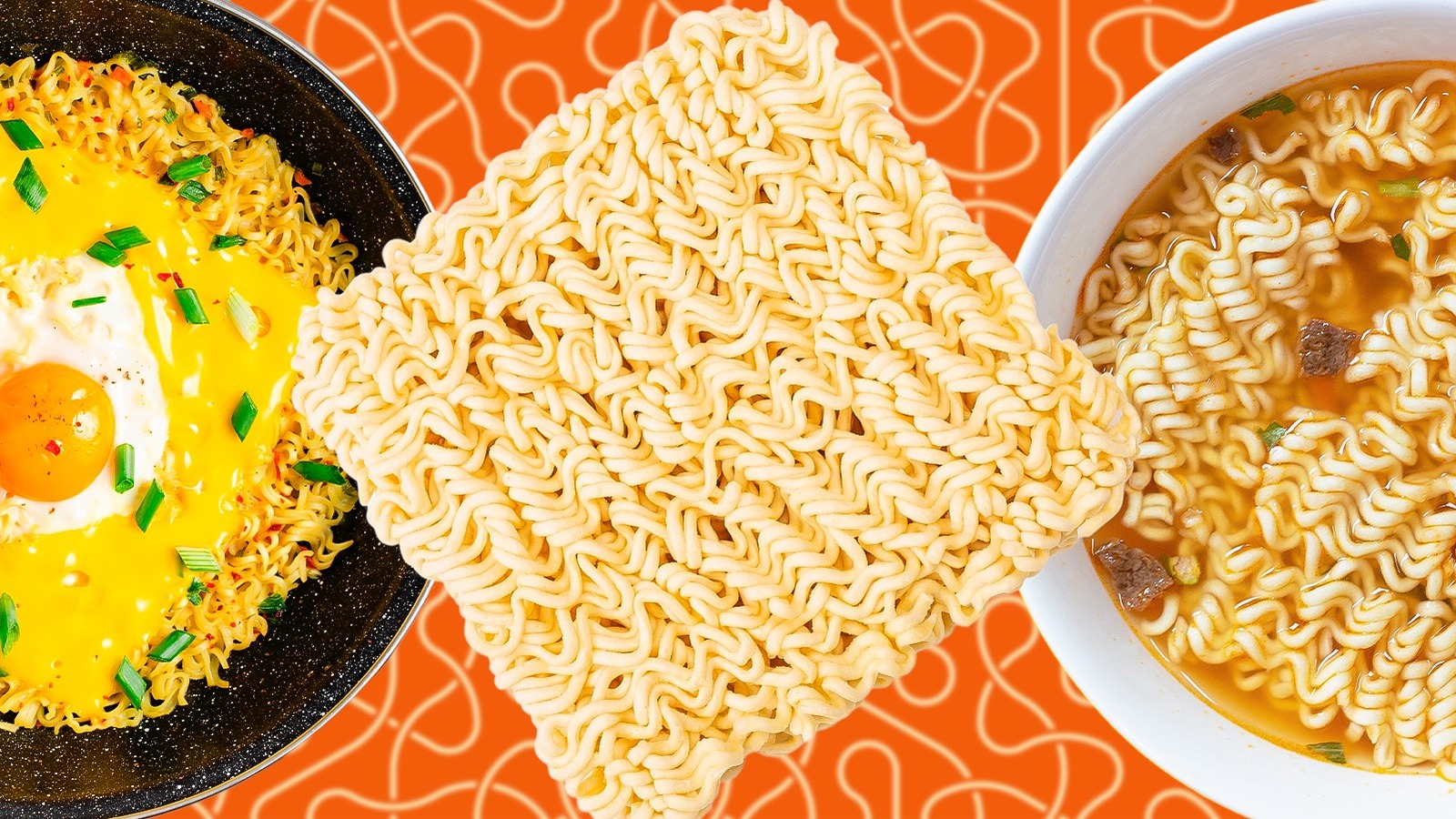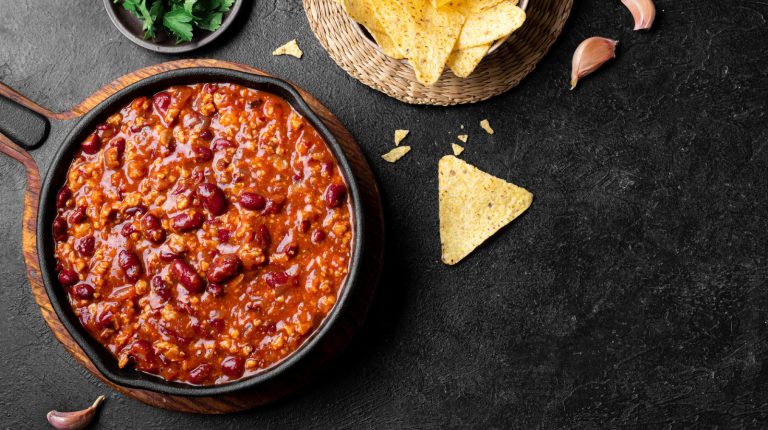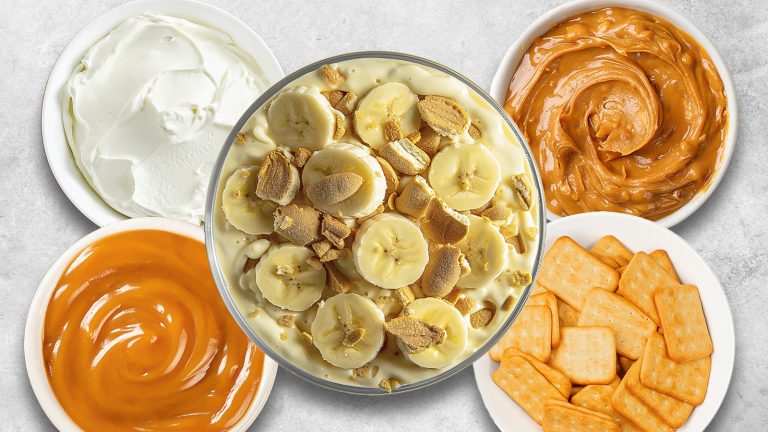Instant ramen might’ve started as a postwar Japanese innovation meant to cheaply feed a hungry nation, but it didn’t stay contained in this role for long. What began as a humble block of deep-fried wheat noodles became a global legend among convenience foods in just a few decades. By the early 2000s, it was everywhere — from college dorms and construction sites to prison commissaries, and even outer space. Its appeal? Limitless versatility, a dirt-cheap price tag, and the fact that you can find it in just about any convenience store.
But this easy-to-make meal has a lot more going for it than just convenience. Get inspired by the culinary hacks of both social media cooks and prison chefs, discover clever ways to reuse leftover seasoning packets, and learn how to turn basic store-bought ramen into something special. Find out how much you’re supposed to eat in one sitting, revisit bizarre discontinued flavors, and explore the places where you can design your own Cup Noodles.
Instant ramen was invented as a solution for nationwide hunger
Wartime scarcity has often sparked food innovation, and instant ramen is one of the products that also resulted out of wartime. However, unlike canned goods or energy bars, it wasn’t a direct result of military-affiliated R&D. After World War II, Japan faced hunger, rice shortages, and an influx of American wheat combined with continued inadequate food rationing. Foods like chuka soba were sold on the black market to feed the growing working class.
Enter Momofuku Ando, a savvy food entrepreneur who had been dabbling in food processing since 1948 with furikake and animal protein extracts. In 1958, he created Chikin Ramen, the world’s first instant noodles. His goal was simple yet profound– fight hunger through accessible food. His guiding belief: “Peace will come to the world when people have enough to eat” remains central to Nissin, the company he founded.
Instant noodles weren’t always dirt cheap
Instant ramen is now seen as the ultimate convenience food — ubiquitous, portable, and, most importantly, cheap. Today, 24-pack of instant ramen is sold for around $7, but when it first hit the shelves, it wasn’t so affordable. In the late 1950s, one pack of Chikin Ramen cost as much as a full bowl of ramen at a Chinese restaurant and was seen as the food of the middle class. When Cup Noodles launched in the 1970s, the price in Japan equaled four packs of ramen or half a bowl of restaurant noodles.
The reason behind its high price was small-scale, non-automated production — Chikin Ramen was initially handmade by some twenty people, including Ando and his family. As the technology improved, costs dropped. Eight months after the launch, Nissin was making 6,000 packs per day, and within two years, they hit over one million daily units, making instant ramen an affordable staple ever since.
American eating habits inspired the invention of Cup Noodles
As the local market became saturated with instant noodles, Momofuku Ando turned his focus outward. During a 1966 trip to the U.S., he noticed Americans ate noodles in a peculiar way– breaking the noodle cake, pouring hot water over it, and eating it with a fork from a cup. Ando realized that international expansion would require increased convenience.
By 1971, Nissin came up with an ingenious styrofoam cup (replaced by a recycled paper cup in 2024 as part of Nissin’s sustainability mission) that held the noodle cake in the center to prevent breaking during transportation, left space underneath to steam the ingredients and fit easily in one hand. To further its on-the-go image, it came with plastic forks. Though inspired by American habits, today it’s far more popular in Mexico, Costa Rica, and Chile, where it outsells packaged noodles.
Compared to traditional noodles, instant ramen spread instantly
Noodles have been a staple in Asia for centuries, with archaeological evidence suggesting they existed 4,000 years ago. Almost two millennia later, hand-pulled Chinese noodles were introduced to Japan. By the 10th century, they reached Afghanistan and Iran, followed by Southeast Asia sometime between the 15th and 19th centuries. Their spread was painstakingly slow — unlike instant noodles, which became an instant hit.
Instant ramen, based on alkaline Chinese noodles, was developed in postwar Japan, where U.S. loans made wheat widely available. As Japanese eating habits westernized, wheat-based instant noodles gained popularity through clever marketing. After conquering the domestic market, they spread globally within 40 years, adapting flavors to local tastes. In some countries, like Mexico, they were introduced as food aid, cementing their role as an affordable, accessible staple. Today, they’re available in over 100 countries.
Convenience store ramen culture is thriving in Japan and Korea
Shortly after its invention, instant ramen was promoted as a nutritive meal that helps build strength. As healthier foods became more accessible during Japan’s economic boom, instant ramen’s convenience took center stage. Unsurprisingly, when the first Japanese convenience stores opened in the 1970s, they stocked instant ramen — the ultimate convenience food.
Today, this symbiotic bond remains strong in Japan and Korea, where ubiquitous 24-hour convenience stores often include designated areas to cook and enjoy ramen on-site, complete with fresh toppings from the fridge. Korean ramyun even has its own convenience store that sells over two hundred different varieties of instant noodles. With built-in cooking machines and noodle cup-shaped tasting tables, it offers a unique, ramen-centric experience. And if you’re in Japan, Osaka’s own Yakantei store offers a similar adventure, with hundreds of local varieties.
Overcooking instant noodles is a common mistake
Everyone knows the joy of whipping up a meal in minutes with a pack of classic instant ramen. But what makes these noodles instant? Momofuku Ando’s original method involved deep-frying noodles, thus cooking and drying them in one step. A more recent invention is air-dried noodles, offering a healthier, oil-free alternative. Either way, the noodles are already pre-cooked, and you’re technically rehydrating rather than cooking them.
Many people assume instant noodles are impossible to mess up. They’re instant — how hard can it be? But, you’re probably overcooking instant noodles and even one extra minute can ruin the overall experience. Our advice? Simply treat your instant noodles like pasta. Follow the instructions on the package, cook the noodles al dente, and eat them quickly before they turn soggy.
Ramen is a valuable prison commodity in the US
In prison, instant ramen isn’t just a meal — it’s currency, culture, and survival rolled into one salty brick. Instant ramen has become the most sought-after item in some prison commissaries, outselling everything from coffee to candy. The reason is simple; when budget cuts slash food quality and portions, ramen stepped in to fill the caloric gap, among other things. Despite nutritional downsides, some inmates often consume multiple packs a day, while some only use it as currency.
Behind bars, ramen is often called soups and forms the backbone of an informal economy. Outside prison, ramen might be seen as cheap or lowbrow — but inside, a locker stocked with 20 packs is a clear sign of status and financial security. You can trade it for favors, services, smuggled produce, or even black-market goods. It’s used to pay cellmates to clean bunks, do laundry, or run errands.
Instant ramen made it to space
Momofuku Ando’s inventive spirit reshaped food history not once, but three times. At 48, he created instant ramen. At 61, he introduced Cup Noodle. Finally, at 94, he designed Space Ram — an instant ramen that could defy gravity. Echoing his first invention, Space Ram was also chicken flavored. However, unlike its earthbound predecessor, the new ramen had to adhere to the limitations of spaceship cooking. The challenge was to develop noodles that would cook at 158 degrees Fahrenheit instead of the normal 212 degrees, and thicken the broth so that it wouldn’t fly around the cabin.
The challenge was overcome successfully, and in 2005, Japanese astronaut Soichi Noguchi became the first person to eat ramen in space. Nissin later added six more flavors to the lineup, including yakisoba — a special request from Noguchi, who loved the dish on Earth.
You might be eating too much instant ramen per meal
The beauty of instant ramen lies in its simplicity — no cooking skills a required to enjoy this hot meal. After making it countless times, you might not even glance at the package anymore. But this lack of attention is probably why you’re probably eating too much. Don’t let the miniature size of the dehydrated noodle brick fool you. A standard bag of instant ramen contains two servings and packs somewhere between 190 and 260 calories, not to mention over 1,500 mg of sodium per pack — close to the daily recommended limit of 2,300 mg. And let’s be real: nobody eats just half.
It’s no surprise that instant ramen — deep-fried, highly processed, and full of artificial flavors — isn’t exactly healthy. When it first launched in postwar Japan, it was pitched as nutritious and stamina-boosting, playing into national efforts to push wheat and meat. Looking back, that messaging was a little optimistic. A 2014 study published by Harvard School of Public Health found that women who consumed instant ramen minimally two times per week had a 68% higher risk of metabolic syndrome. Beyond sodium and carbs, there’s not much else going on nutritionally. So next time you reach for a pack, maybe consider splitting it — or at least think twice before slurping down the whole thing.
The penitentiary system breeds ramen innovation
Instant ramen has always been a blank canvas for hungry creatives, but nowhere is that more true than in prison. Incarcerated individuals, working with extreme culinary limitations — no proper kitchen, no in-cell cooking, and only a small selection of commissary items — have developed a whole subgenre of hardcore ramen innovation. Because standard prison meals are often low in both calories and flavor, resourceful inmates have transformed instant noodles into a surprising range of dishes, from tamales and goulash to dips and pizza. Yes, pizza.
A classic is something called a spread, a kind of DIY casserole built from crushed ramen, hot water, seasoning packets, and whatever else is available — usually crushed nachos, squeeze cheese, mayo, tuna, and Slim Jims. Often, these are mixed in a chip bag, steamed using hot sink water, and then eaten communally, kind of like a potluck in a pouch. Some take it further, using ramen as a dough substitute to make makeshift enchiladas or burritos, or using seriously unexpected ingredients like Kool-Aid or Coca-Cola.
Interestingly, some ramen flavors are commissary-specific and nearly impossible to find elsewhere, such as Maruchan’s Hot-n-Spicy Vegetable, Texas Beef, and Spicy Cajun Chicken. Still, classic flavors like chicken, beef, and chili remain the foundation of prison ramen cuisine.
Instant ramen doesn’t last forever
Instant ramen has long been seen as a go-to food in times of crisis. It’s been credited with easing Japan’s postwar hunger, fed police during the nationally televised 1972 Asama lodge standoff, and served as emergency food aid during natural disasters. During the COVID-19 pandemic, demand surged again – Nissin, the maker of Cup Noodles, saw the revenue jump from $1.46 billion in 2019 to $1.59 billion in 2022 (via Quartz). Naturally, many people stock up on ramen as it’s a shelf-stable emergency food.
But just because it lasts long doesn’t mean it lasts forever. Most instant ramen is good for eight to 12 months after it was produced. This is mostly due to dehydrated noodles, heat-treated and pH-controlled condiments, and durable moisture-blocking packaging. If it’s within six months past the expiration and has no mold, bad smell, discoloration, or strange taste, you can probably still eat it, but at your own risk. When in doubt, trust your senses, and store it in a cool, dark place to extend its life.
There’s no limit to instant ramen flavors
The history of instant ramen might have started with a single flavor, but in the half a century that followed, Nissin and its competitors did not stop experimenting. Some flavors — like beef taco yakisoba or pasta-style vongole – were clear attempts to appeal to international markets or introduce global tastes to local consumers. Others honored regional Japanese styles, like Hokkaido’s miso ramen. And then came the truly unexpected: everything bagel with cream cheese, ume sour plum and mayo, and even pumpkin spice flavors.
Most of these outlandish instant ramen flavors have been discontinued, but that hasn’t stopped fans from hoping for a comeback. Nissin’s sour cream and onion ramen (a Pringles collab), and the caffeinated Gaming Cup Noodles still have their fair share of fans. Occasionally, oddball favorites such as Pumpkin Spice Cup Noodles are resurrected. So, if you’re nostalgic for a discontinued flavor, don’t give up hope — your favorite bizarre ramen might just make a comeback.
Upgrading instant ramen is incredibly easy
Just because instant ramen is cheap and unassuming, it doesn’t mean eating it should be depressing. It’s actually an affordable and versatile base that home cooks of any skill level can take from dull to delightful. There is truly no limit to the number of ways you can seriously upgrade instant ramen. It can be as simple as adding a splash of soy sauce or a squeeze of sriracha to the broth or making it more nutritious with tofu, dumplings, or frozen vegetables for a heartier instant ramen.
For a fresh twist, top your ramen with crisp ingredients like bean sprouts, scallions, carrot ribbons, or cilantro. Don’t skip the seasonings – garlic, ginger, and sesame seeds go a long way. Want to mix it up? Try gochujang, Chinese five spice, or Japanese flavors like teriyaki, wasabi, or furikake. Alternatively, use the noodles in stir-fries or fusion dishes like Korean rabokki for the ultimate comfort meal.
There are plenty of ways to use uncooked instant ramen
If you always follow the instructions on an instant ramen pack, here’s a plot twist: you don’t have to cook them at all. Since instant noodles are already pre-cooked, you can eat them straight from the pack like a crunchy snack. Toss with your favorite seasoning and enjoy. Crushed noodles also make a great base for DIY trail mix with nuts, pretzels, and wasabi peas. Some people even stir them into melted marshmallows for ramen Krispies-style treats.
Outside the snack zone, crushed instant noodles can elevate salads (think cabbage slaw, sesame dressings) to act as a cheap and crunchy crouton alternative. Even mac and cheese or instant ramen can benefit texturally from a crisp topping. Finally, you can crush them finely and use instead of breadcrumbs. Basically, if you think of uncooked instant noodles less as soup and more as crunchy, ultra-cheap pasta crackers, a whole new world opens up.
Some instant noodle brands are accidentally vegan
Being a devoted plant-based eater often creates certain limitations, especially when it comes to snacks and convenience foods. However, seasoned vegans know that just because a package doesn’t say vegan doesn’t mean it isn’t. Some instant ramen varieties are accidentally vegan, like Nissin Soy Sauce Top Ramen and Indomie Mi Goreng. Since many instant noodles use artificial flavors, don’t let names like beef or chicken scare you off. For example, Samyang’s 2x Spicy Hot Chicken Ramen and Itsuki Kyushu Tonkotsu Pork Ramen contain no animal products.
Most of the time, the noodles are completely plant-based, so even if the seasoning’s not, you can build your own vegan instant ramen with miso, soy sauce, dried shiitake mushrooms, roasted garlic, or gochujang. Finally, if you don’t feel like scrupulously studying the labels, look for decidedly vegan brands like Lotus Foods Rice Ramen or Chef Woo Instant Ramen.
Ramen seasoning can be reused
While instant ramen is designed to be a perfect self-contained meal that you’re meant to enjoy as described on the package, occasionally you’ll stray from the script. Maybe you’re making your own sauce or broth, or using the noodles in dishes like rabokki. This will inevitably lead to some ramen seasoning packets scattered across your pantry. Should you be left with an unused packet, don’t toss it. Instead, find creative ways to enhance your meals with it.
Ever wondered what’s in a packet of ramen seasoning? This umami-rich powder is full of aromatics, veggies, mushrooms, spices, stock granules, and powerful flavor enhancers such as sugar and MSG. Mixing it into a salad dressing, tossing some popcorn or french fries in it, and using it to upgrade the flavors of soups, stews, and rice are among the best alternative uses for ramen seasoning packets. Bonus tip: transfer your favorite seasoning to a salt shaker for convenience.
You can make your own Cup Noodles from scratch in Japan
For real instant ramen lovers, Japan offers Cup Noodles museums in Yokohama and Osaka Ikeda. Opened by Nissin to celebrate the legacy of Momofuku Ando, the man who started it all, these museums are less about dusty display cases and more about interactive, Instagrammable chaos. Aside from the recreation of Momofuku’s workshed and a vast display of instant ramen from around the world, the star attraction is My Cup Noodles Factory.
It’s exactly what it sounds like: a DIY instant noodle experience where you design your own Cup Noodles from start to finish. You get a blank cup, decorate it with markers (yes, even badly drawn anime characters are welcome), then choose your broth (chicken, curry, seafood, chili tomato), and four toppings (corn, cheese, shrimp, crabstick — you name it). Your creation is sealed, shrink-wrapped, and packed in a giant inflatable bag you can wear like a purse and safely transport back home.





